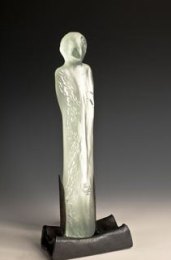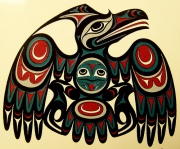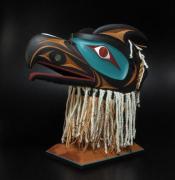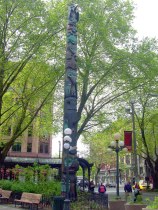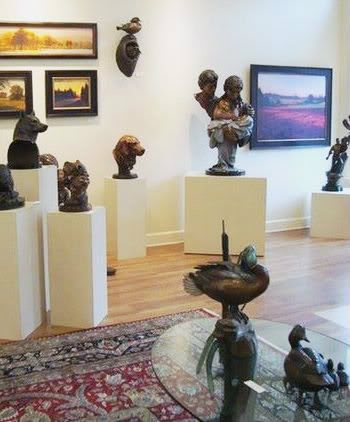Lillian Pitt will be joining us for First Friday on May 2, 2014. A Native American artist from the Big River (Columbia River) region of the Pacific Northwest, Pitt was born on the Warm Springs Reservation in Oregon. She is a descendent of Wasco, Yakama, and Warm Springs people.
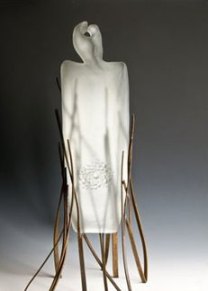 Pitt is one of the most highly regarded Native American artists in the Pacific Northwest. Her works have been exhibited and reviewed regionally, nationally and internationally, and she has been the recipient of numerous awards and distinctions. Her awards include the 2007 Earle A. Chiles Award for Lifetime Achievement, and the 1990 Governor’s Award of the Oregon Arts Commission, which declared that she had made “significant contributions to the growth and development of the cultural life of Oregon.”
Pitt is one of the most highly regarded Native American artists in the Pacific Northwest. Her works have been exhibited and reviewed regionally, nationally and internationally, and she has been the recipient of numerous awards and distinctions. Her awards include the 2007 Earle A. Chiles Award for Lifetime Achievement, and the 1990 Governor’s Award of the Oregon Arts Commission, which declared that she had made “significant contributions to the growth and development of the cultural life of Oregon.”
Primarily a sculptor and mixed media artist, Lillian’s lifetime of works include artistic expressions in clay, bronze, wearable art, prints, and most recently, glass. The focus of her work draws on over 12,000 years of Native American history and tradition of the Columbia River region. Regardless of the medium she chooses to use, Lillian’s contemporary works are all aimed at giving voice to her people.
“Everything I do, regardless of the medium, is directly related to honoring my ancestors and giving voice to the people, the environment and the animals. It’s all about maintaining a link with tradition, and about honoring the many contributions my ancestors have made to this world.” While glass is her most recent medium, Lillian continues to create works in all of the various media she is known for, including clay, bronze, jewelry, prints, and mixed media.
Lillian’s works are found in personal collections, art galleries and museums. They are also found in numerous public spaces including parks, schools and cultural institutions throughout the region. Her most recent public works are featured at the Vancouver Land Bridge, one of the seven “confluence” projects along the Columbia River, designed by internationally renowned architect Maya Lin.
Just as her ancestors would have done, Lillian makes creative use of whatever materials are available and appropriate to the task at hand. Lillian’s most recent works are made from the mediums of cast glass and fused glass.
Lillian says, “I love using glass because of the sense of depth I can create in my sculptures, and because it helps me to create the kind of spiritual quality I’m often trying to achieve.”
Be sure to join us on First Friday and meet this unique artist and learn more about her work and technique.
Images: Shadow Spirit in the Grasses; Dreamer


